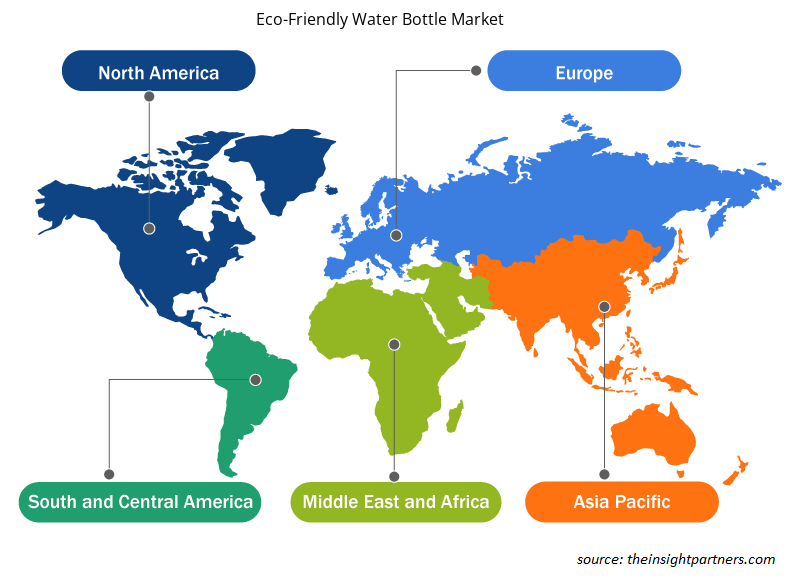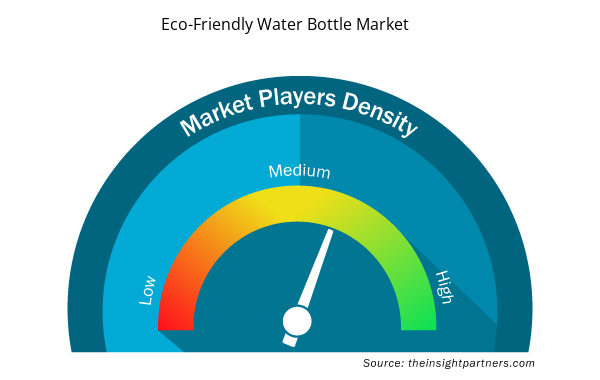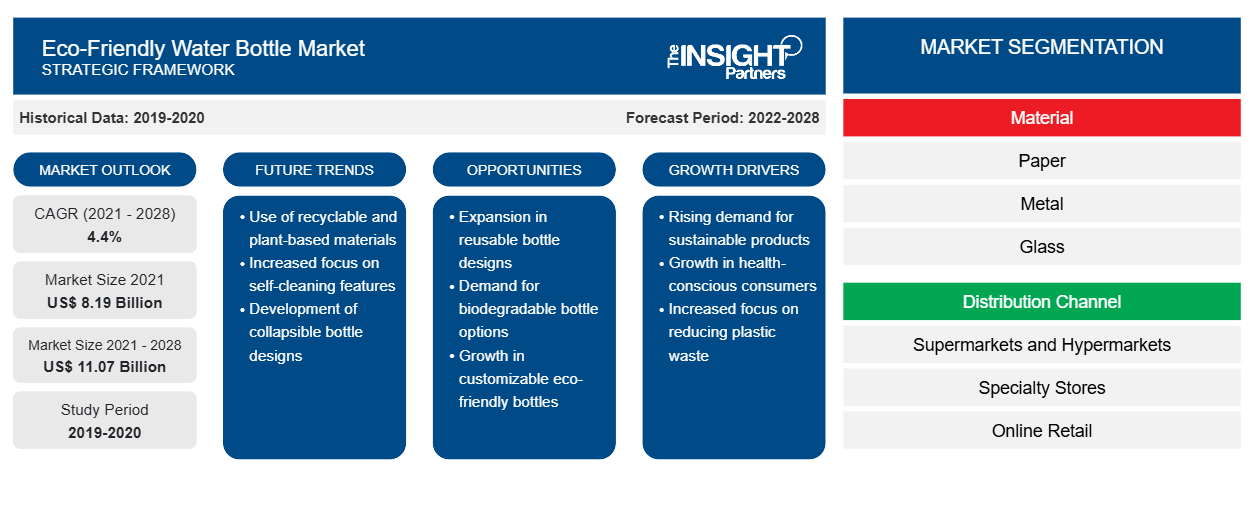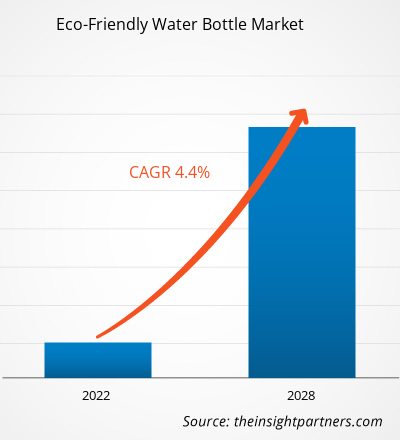环保水瓶市场规模预计将从 2021 年的 81.9319 亿美元增至 2028 年的 110.6871 亿美元;预计 2021-2028 年期间的复合年增长率为 4.4%。
市场的增长归因于消费者迅速增强的环保意识。消费者正在积极用环保水瓶替代一次性塑料水瓶,以防止塑料在环境中堆积。社交媒体渠道助长了这一趋势,有影响力的人正在宣传使用可重复使用的水瓶是一种道德选择。2020
年,亚太地区占据了环保水瓶市场的最大份额,预计在预测期内将实现最高的复合年增长率。亚太地区市场分为中国、印度、日本、韩国和澳大利亚。由于人口增长和随之而来的对消费品的需求,韩国、中国和日本等国家是该地区市场的主要贡献者。此外,快速的城市化、显著的经济发展、文化多样性以及日益普及的高科技趋势都是有利于亚太地区环保水瓶市场增长的因素。
定制此报告以满足您的需求
您可以免费定制任何报告,包括本报告的部分内容、国家级分析、Excel 数据包,以及为初创企业和大学提供优惠和折扣
- 获取此报告的关键市场趋势。这个免费样品将包括数据分析,从市场趋势到估计和预测。
COVID-19 疫情对环保水瓶市场的影响
由于不同地区的长期封锁、制造单位停工、旅行、国际贸易和供应链限制以及原材料短缺,COVID-19 疫情严重扰乱了制造业的运营效率。这些因素还阻碍了市场的增长,因为原材料价格上涨、劳动力短缺和金融不稳定。然而,随着 COVID-19 疫苗的推出和使用,各国先前实施的限制正在放松,企业正在取得进展。此外,各国政府正计划开发现代化和技术先进的基础设施,以减轻疫情对经济的影响。此外,在疫情后期,消费者参与了户外娱乐活动,这有助于对环保水瓶的需求。
市场洞察
推动技术发展,推动环保水瓶市场增长
环保水瓶由玻璃、植物基塑料、纸张和其他可持续原材料制成。制造商专注于采用生物基塑料、可回收金属和玻璃来制造环保水瓶。生物基塑料由大豆和玉米等可再生材料而非化石燃料制成。这些产品通过使用可再生资源减少了对化石燃料的依赖。环保水瓶越来越多地用于各种商业空间,例如车间、泳池房、酒店、健身房和其他体育设施、水疗中心和美容院以及医院和医疗设施。
根据国际瓶装水协会 (IBWA) 2020 年发布的数据,美国人在 2020 年消费了 150 亿加仑的瓶装水。这意味着环保水瓶供应商具有扩大其覆盖范围的市场潜力。它鼓励制造商采用新技术来生产环保解决方案。
分销渠道洞察
根据分销渠道,全球环保水瓶市场分为超市和大卖场、专卖店、在线零售和其他。2020 年,超市和大卖场部分占据了最大的收入份额,预计在线零售部分在预测期内的复合年增长率最高。超市和大卖场在所有地区都很容易找到,而且分布广泛。他们采用吸引消费者的有吸引力的营销技巧,从而为环保水瓶带来更高的销量。
Chilly's;S'well;Ocean Bottle;Corkcicle;Hydro Flask;Bottles Società Benefit SrlPIVA;Frank Green;Qwetch;Klean Kanteen;和 Kinto Co., Ltd. 是环保水瓶市场的参与者之一。这些公司为市场提供了广泛的产品组合。该市场中的许多公司都在发展中地区开展业务,这为他们提供了有利可图的机会。市场参与者正在开发高质量和创新的产品以满足客户的需求。
环保水瓶市场区域洞察
Insight Partners 的分析师已详尽解释了预测期内影响环保水瓶市场的区域趋势和因素。本节还讨论了北美、欧洲、亚太地区、中东和非洲以及南美和中美洲的环保水瓶市场细分和地理位置。

- 获取环保水瓶市场的区域特定数据
环保水瓶市场报告范围
| 报告属性 | 细节 |
|---|---|
| 2021 年市场规模 | 81.9亿美元 |
| 2028 年市场规模 | 110.7亿美元 |
| 全球复合年增长率(2021 - 2028) | 4.4% |
| 史料 | 2019-2020 |
| 预测期 | 2022-2028 |
| 涵盖的领域 | 按材质
|
| 覆盖地区和国家 | 北美
|
| 市场领导者和主要公司简介 |
|
环保水瓶市场参与者密度:了解其对业务动态的影响
环保水瓶市场正在快速增长,这得益于终端用户需求的不断增长,而这些需求又源于消费者偏好的不断变化、技术进步以及对产品优势的认识不断提高等因素。随着需求的增加,企业正在扩大其产品范围,进行创新以满足消费者的需求,并利用新兴趋势,从而进一步推动市场增长。
市场参与者密度是指在特定市场或行业内运营的企业或公司的分布情况。它表明相对于给定市场空间的规模或总市场价值,有多少竞争对手(市场参与者)存在于该市场空间中。
在环保水瓶市场运营的主要公司有:
- 寒冷
免责声明:上面列出的公司没有按照任何特定顺序排列。

- 了解环保水瓶市场顶级关键参与者概况
报告亮点
- 市场上不断发展的行业趋势,帮助参与者制定有效的长期战略
- 发达市场和发展中市场采用的业务增长战略
- 2019 年至 2028 年市场定量分析
- 全球环保水瓶需求量估计
- PEST 分析说明消费品行业买家和供应商的效力
- 了解竞争市场状况的最新发展
- 市场趋势和前景以及推动和抑制环保水瓶市场增长的因素
- 通过强调支撑商业利益的市场策略来协助决策过程,从而促进市场增长
- 不同节点的环保水瓶市场规模
- 市场详细概述和细分,以及环保水瓶行业动态
- 各地区环保水瓶市场规模及增长潜力巨大
“2028 年全球环保水瓶市场分析”是一项针对化学品和材料行业的专业深入研究,特别关注全球环保水瓶市场趋势分析。该报告旨在提供市场概述和详细的市场细分。环保水瓶市场根据材料、分销渠道和地理位置进行细分。按材料,市场分为纸张、金属、玻璃等。按分销渠道,市场分为超市和大卖场、专卖店、在线零售等。按地理位置,环保水瓶市场大致分为北美、欧洲、亚太地区 (APAC)、中东和非洲 (MEA) 以及南美洲和中美洲 (SAM)。
公司简介
- Chilly's
- 膨胀
- 海洋瓶
- 软木自行车
- 水瓶
- Bottles Società Benefit SrlPIVA
- 弗兰克·格林
- 奎奇
- 克莱恩·坎廷
- 金东株式会社
- 历史分析(2 年)、基准年、预测(7 年)及复合年增长率
- PEST 和 SWOT 分析
- 市场规模价值/数量 - 全球、区域、国家
- 行业和竞争格局
- Excel 数据集



Report Coverage
Revenue forecast, Company Analysis, Industry landscape, Growth factors, and Trends

Segment Covered
This text is related
to segments covered.

Regional Scope
North America, Europe, Asia Pacific, Middle East & Africa, South & Central America

Country Scope
This text is related
to country scope.
常见问题
The global eco-friendly bottle market is expanding rapidly due to increased public and government awareness about environmental protection. The crucial driver propelling the market is the increased availability of a diverse selection of items from various brands on e-commerce platforms with services such as free delivery and promotional discounts.
Based on material, the metal segment is expected to be the fastest-growing segment during the forecast period. The characteristics of metal water bottles, such as durability and reusability, are expected to propel the eco-friendly water bottle market growth.
In 2020, the supermarkets and hypermarkets segment held the largest market share. The availability of a wide variety of products under one roof attract customers to shop at these stores. Furthermore, consumer-oriented product placement that aids them in selecting and purchasing the product faster than waiting for its delivery, as is the case with online purchases.
In 2020, the metal segment held the largest market share. Metal acts as a better shielding barrier than any plastic material. Metal is abundant in nature and can be recycled again with minimal energy waste during manufacture, lowering the overall cost of production for eco-friendly water bottles. These factors contribute to the growth of the eco-friendly water bottle market.
The major players operating in the eco-friendly water bottles market are Chilly's, S'well, Ocean Bottle, Corkcicle, Hydro Flask, 24 Bottles Società Benefit S.r.l. P.IVA, Frank Green, Qwetch, Klean Kanteen, and Kinto Co., Ltd.
In 2020, Asia-Pacific accounted for the largest share of the global eco-friendly water bottles market. The eco-friendly water bottle market has expanded significantly as governments and consumers have become more concerned about environmental issues. Manufacturers' increasing investments on research and development are crucial factors impacting the eco-friendly water bottle market positively.
Trends and growth analysis reports related to Consumer Goods : READ MORE..
The List of Companies - Eco-Friendly Water Bottle Market
- Chilly’s
- S'well
- Ocean Bottle
- Corkcicle
- Hydro Flask
- 24 Bottles Società Benefit S.r.l. P.IVA
- Frank Green
- Qwetch
- Klean Kanteen
- Kinto Co., Ltd.
The Insight Partners performs research in 4 major stages: Data Collection & Secondary Research, Primary Research, Data Analysis and Data Triangulation & Final Review.
- Data Collection and Secondary Research:
As a market research and consulting firm operating from a decade, we have published and advised several client across the globe. First step for any study will start with an assessment of currently available data and insights from existing reports. Further, historical and current market information is collected from Investor Presentations, Annual Reports, SEC Filings, etc., and other information related to company’s performance and market positioning are gathered from Paid Databases (Factiva, Hoovers, and Reuters) and various other publications available in public domain.
Several associations trade associates, technical forums, institutes, societies and organization are accessed to gain technical as well as market related insights through their publications such as research papers, blogs and press releases related to the studies are referred to get cues about the market. Further, white papers, journals, magazines, and other news articles published in last 3 years are scrutinized and analyzed to understand the current market trends.
- Primary Research:
The primarily interview analysis comprise of data obtained from industry participants interview and answers to survey questions gathered by in-house primary team.
For primary research, interviews are conducted with industry experts/CEOs/Marketing Managers/VPs/Subject Matter Experts from both demand and supply side to get a 360-degree view of the market. The primary team conducts several interviews based on the complexity of the markets to understand the various market trends and dynamics which makes research more credible and precise.
A typical research interview fulfils the following functions:
- Provides first-hand information on the market size, market trends, growth trends, competitive landscape, and outlook
- Validates and strengthens in-house secondary research findings
- Develops the analysis team’s expertise and market understanding
Primary research involves email interactions and telephone interviews for each market, category, segment, and sub-segment across geographies. The participants who typically take part in such a process include, but are not limited to:
- Industry participants: VPs, business development managers, market intelligence managers and national sales managers
- Outside experts: Valuation experts, research analysts and key opinion leaders specializing in the electronics and semiconductor industry.
Below is the breakup of our primary respondents by company, designation, and region:

Once we receive the confirmation from primary research sources or primary respondents, we finalize the base year market estimation and forecast the data as per the macroeconomic and microeconomic factors assessed during data collection.
- Data Analysis:
Once data is validated through both secondary as well as primary respondents, we finalize the market estimations by hypothesis formulation and factor analysis at regional and country level.
- Macro-Economic Factor Analysis:
We analyse macroeconomic indicators such the gross domestic product (GDP), increase in the demand for goods and services across industries, technological advancement, regional economic growth, governmental policies, the influence of COVID-19, PEST analysis, and other aspects. This analysis aids in setting benchmarks for various nations/regions and approximating market splits. Additionally, the general trend of the aforementioned components aid in determining the market's development possibilities.
- Country Level Data:
Various factors that are especially aligned to the country are taken into account to determine the market size for a certain area and country, including the presence of vendors, such as headquarters and offices, the country's GDP, demand patterns, and industry growth. To comprehend the market dynamics for the nation, a number of growth variables, inhibitors, application areas, and current market trends are researched. The aforementioned elements aid in determining the country's overall market's growth potential.
- Company Profile:
The “Table of Contents” is formulated by listing and analyzing more than 25 - 30 companies operating in the market ecosystem across geographies. However, we profile only 10 companies as a standard practice in our syndicate reports. These 10 companies comprise leading, emerging, and regional players. Nonetheless, our analysis is not restricted to the 10 listed companies, we also analyze other companies present in the market to develop a holistic view and understand the prevailing trends. The “Company Profiles” section in the report covers key facts, business description, products & services, financial information, SWOT analysis, and key developments. The financial information presented is extracted from the annual reports and official documents of the publicly listed companies. Upon collecting the information for the sections of respective companies, we verify them via various primary sources and then compile the data in respective company profiles. The company level information helps us in deriving the base number as well as in forecasting the market size.
- Developing Base Number:
Aggregation of sales statistics (2020-2022) and macro-economic factor, and other secondary and primary research insights are utilized to arrive at base number and related market shares for 2022. The data gaps are identified in this step and relevant market data is analyzed, collected from paid primary interviews or databases. On finalizing the base year market size, forecasts are developed on the basis of macro-economic, industry and market growth factors and company level analysis.
- Data Triangulation and Final Review:
The market findings and base year market size calculations are validated from supply as well as demand side. Demand side validations are based on macro-economic factor analysis and benchmarks for respective regions and countries. In case of supply side validations, revenues of major companies are estimated (in case not available) based on industry benchmark, approximate number of employees, product portfolio, and primary interviews revenues are gathered. Further revenue from target product/service segment is assessed to avoid overshooting of market statistics. In case of heavy deviations between supply and demand side values, all thes steps are repeated to achieve synchronization.
We follow an iterative model, wherein we share our research findings with Subject Matter Experts (SME’s) and Key Opinion Leaders (KOLs) until consensus view of the market is not formulated – this model negates any drastic deviation in the opinions of experts. Only validated and universally acceptable research findings are quoted in our reports.
We have important check points that we use to validate our research findings – which we call – data triangulation, where we validate the information, we generate from secondary sources with primary interviews and then we re-validate with our internal data bases and Subject matter experts. This comprehensive model enables us to deliver high quality, reliable data in shortest possible time.


 获取此报告的免费样本
获取此报告的免费样本